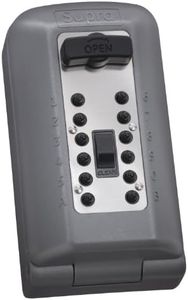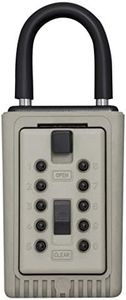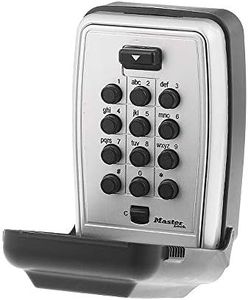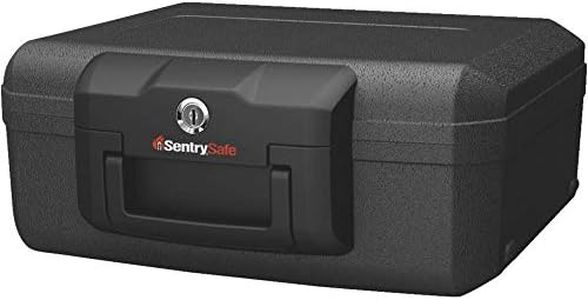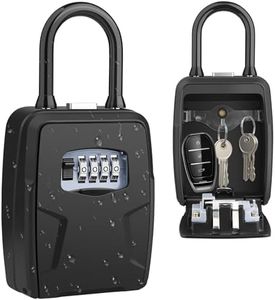We Use CookiesWe use cookies to enhance the security, performance,
functionality and for analytical and promotional activities. By continuing to browse this site you
are agreeing to our privacy policy
10 Best Key Lock Boxes
From leading brands and best sellers available on the web.Buying Guide for the Best Key Lock Boxes
Choosing the right key lock box is important for ensuring the safety and convenience of storing keys outside your home or property. A lock box protects your spare keys, making them accessible to trusted people like family members, cleaners, or real estate agents, while keeping them safe from unwanted access. Picking the proper one involves understanding the available types, sizes, security features, and installation methods so you can match your choice with your specific needs, whether it’s for occasional use or regular access.Locking MechanismThe locking mechanism is how a lock box secures your keys. Most key lock boxes use either a combination code or a keyed lock. A combination lock requires you to remember and input a number sequence, making it convenient so you don’t need to carry an extra key, while a keyed lock involves using a designated key to unlock the box. Combination locks are popular for frequent use and shared access, while keyed options may feel more secure for individual access. Consider how many people need access and whether remembering a code or managing extra keys is easier for you.
Material and DurabilityMaterial and durability refers to the construction quality of the lock box, which impacts how well it can resist tampering and weather. Higher-quality lock boxes are made of reinforced metals such as steel or zinc alloy, offering better protection against forced entry and environmental elements like rain or snow. Plastic lock boxes might be lighter or cheaper but are less secure. For outdoor or high-traffic use, go for robust metal construction; for basic indoor use, lighter materials may suffice.
Capacity and SizeCapacity and size define how many keys—or what type and size—they can hold. Small lock boxes may only fit a single standard house key, while larger versions can store multiple keys, fobs, or even access cards. Think about how many keys you'll need to store, and whether you need room for larger items. For just a spare key, a compact box is fine. If you’re providing access to multiple people or equipment, consider a larger model.
Weather ResistanceWeather resistance ensures your lock box can endure outdoor conditions such as rain, snow, and humidity without rusting or failing. Some boxes feature rubber seals or covers to protect the lock and combination dials. If you’re mounting your box outdoors, this is crucial—look for descriptions stating water-resistant or weatherproof design. For indoor use, less protection is needed.
Mounting OptionsMounting options define how and where you can install your lock box. Some mount directly to a wall, door frame, or other sturdy surfaces for permanent use, while others come with shackle-style attachments (like a giant padlock) to hook over doorknobs, gates, or fences. Wall-mounted boxes offer more security since they’re harder to remove, while portable shackle boxes offer more flexibility if you might need to move them often. Consider where you plan to put the box and whether you want it fixed or portable.
Ease of UseEase of use relates to how simply the lock box can be opened and closed, and how straightforward it is for trusted people to access the keys. This includes clarity of the code dials, size of the opening, and any lighting features for use in the dark. If the users are children, seniors, or people who might struggle with small mechanisms, look for a model with large, easy-to-turn dials and a simple access process.
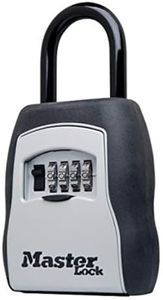
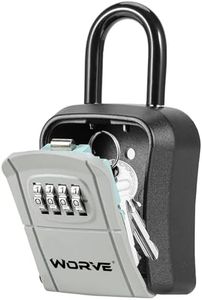
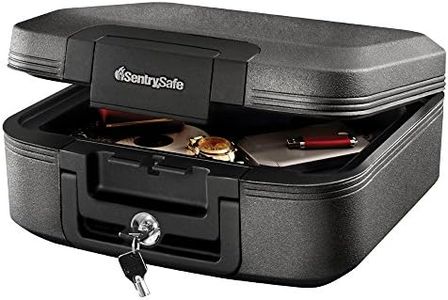
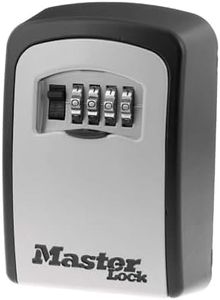

![Key Safe, [New Version] [Weatherproof] Diyife Portable Lock Box for Keys Outdoor with Removable Wire Rope Shackle, Hangable 4-Digit Combination Key Lock Box for Home Office Garage School Car](https://images-proxy.bestreviews.guide/MhlSZ_fW-s2QWdJuOKQhYbwVWbw=/0x300/https://m.media-amazon.com/images/I/41si74Q3oCL._AC_CX679_.jpg)
![[NEW VERSION] Security Lock Box, 4 Digit Combination Key Storage Lock Box, 3.66'' Wall Mounted Key Safe Box, 5 Keys Capacity Lock Box for Indoor Outdoor](https://images-proxy.bestreviews.guide/6XoVwTIa3_nJVwcxaCIHV4P3NIw=/0x300/https://m.media-amazon.com/images/I/41BQuAp4w0L._AC_CX679_.jpg)

